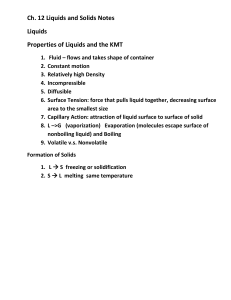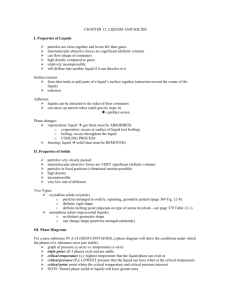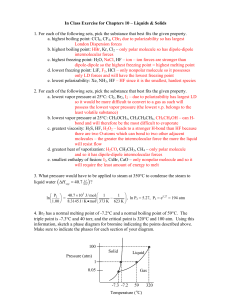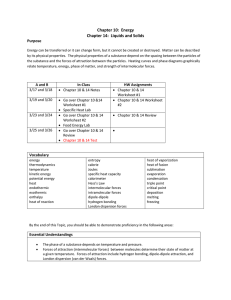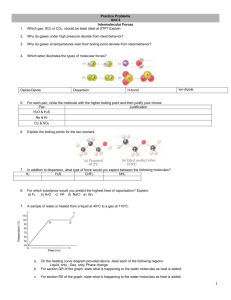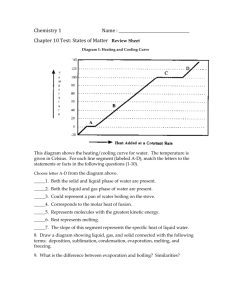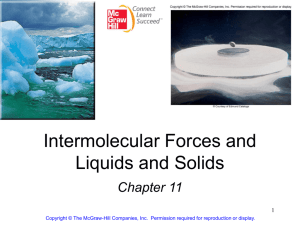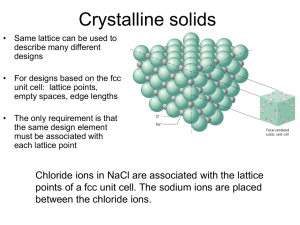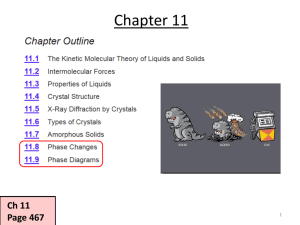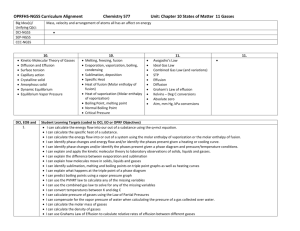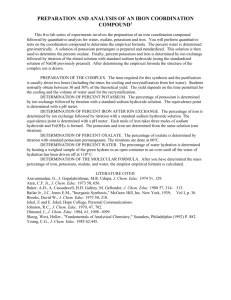chapter11problems-bu..
advertisement
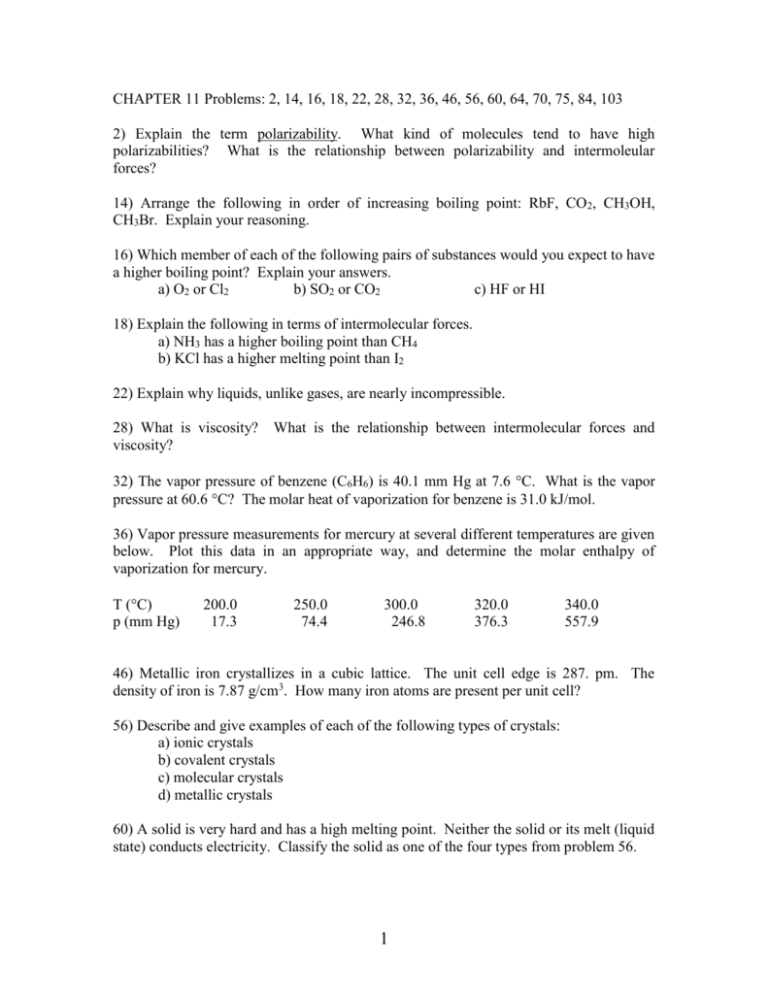
CHAPTER 11 Problems: 2, 14, 16, 18, 22, 28, 32, 36, 46, 56, 60, 64, 70, 75, 84, 103 2) Explain the term polarizability. What kind of molecules tend to have high polarizabilities? What is the relationship between polarizability and intermoleular forces? 14) Arrange the following in order of increasing boiling point: RbF, CO2, CH3OH, CH3Br. Explain your reasoning. 16) Which member of each of the following pairs of substances would you expect to have a higher boiling point? Explain your answers. a) O2 or Cl2 b) SO2 or CO2 c) HF or HI 18) Explain the following in terms of intermolecular forces. a) NH3 has a higher boiling point than CH4 b) KCl has a higher melting point than I2 22) Explain why liquids, unlike gases, are nearly incompressible. 28) What is viscosity? viscosity? What is the relationship between intermolecular forces and 32) The vapor pressure of benzene (C6H6) is 40.1 mm Hg at 7.6 C. What is the vapor pressure at 60.6 C? The molar heat of vaporization for benzene is 31.0 kJ/mol. 36) Vapor pressure measurements for mercury at several different temperatures are given below. Plot this data in an appropriate way, and determine the molar enthalpy of vaporization for mercury. T (C) p (mm Hg) 200.0 17.3 250.0 74.4 300.0 246.8 320.0 376.3 340.0 557.9 46) Metallic iron crystallizes in a cubic lattice. The unit cell edge is 287. pm. The density of iron is 7.87 g/cm3. How many iron atoms are present per unit cell? 56) Describe and give examples of each of the following types of crystals: a) ionic crystals b) covalent crystals c) molecular crystals d) metallic crystals 60) A solid is very hard and has a high melting point. Neither the solid or its melt (liquid state) conducts electricity. Classify the solid as one of the four types from problem 56. 1 64) What is an amorphous solid? How does it differ from a crystalline solid? 70) How is the molar heat of sublimation related to the molar heat of fusion and the molar heat of vaporization? On what law is this relationshop based? 75) What is the critical temperature? What is the significance of the critical temperature in terms of the condensation of gases? 84) Calculate the amount of heat (in kJ) required to convert 150.2 g of water into steam at T = 100. C. Note that for water at 100.0 C , Hvap = 40.7 kJ/mol. 103) Which of the following substances has the highest polarizability: CH4, H2, CCl4, SF6, H2S? 2
